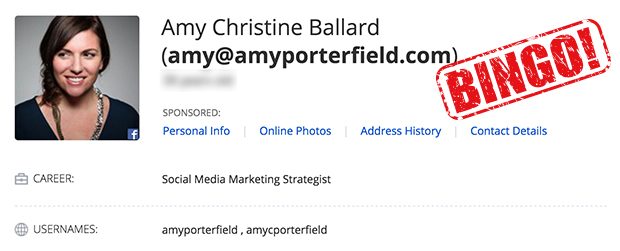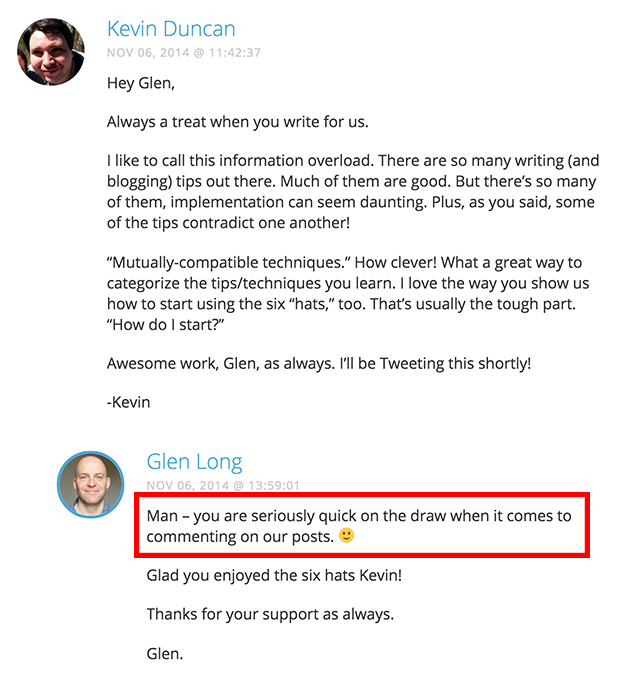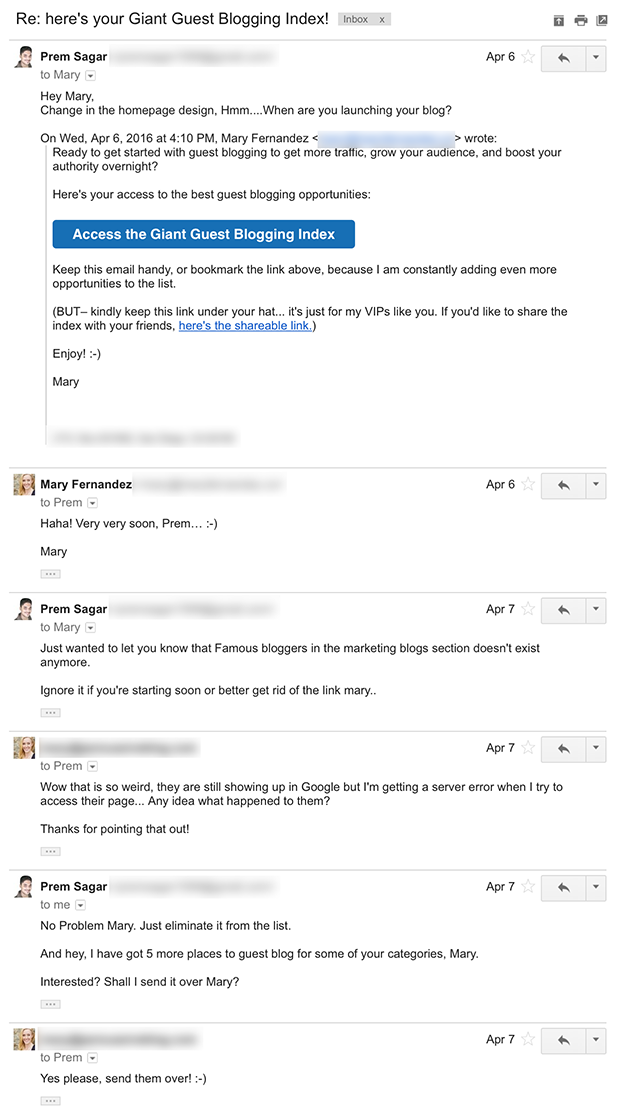Do you want to learn how to write an outreach email? Or, are you struggling to get responses from your outreach emails? You’re not alone.
As a digital marketer, I’ve been there too. Outreach emails are a vital tool for building relationships, generating leads, and driving traffic.
But crafting an email that gets noticed in a crowded inbox is an art.
In this guide, I’ll share the secrets to creating effective outreach emails that get results.
- What is an Outreach Email?
- Why are Outreach Emails Important?
- The Anatomy of an Effective Outreach Email
- Crafting Your Outreach Email Strategy
- Writing Tips for Outreach Emails
What is an Outreach Email?
An outreach email is a message sent to a person or organization to achieve a specific goal, such as promoting content, building backlinks, or forming partnerships. There are various types of outreach emails, including link-building requests, guest post proposals, and influencer collaboration invitations.
Why are Outreach Emails Important?
Outreach emails are crucial for several reasons:
- Building Relationships: They help you connect with industry influencers and potential partners.
- Generating Leads: Effective outreach can drive traffic to your site and increase leads.
- Enhancing Brand Visibility: Getting featured on other websites or collaborating with influencers boosts your brand’s exposure.
- Gaining Backlinks: Backlinks are essential for SEO, and outreach emails are a common way to acquire them.
The Anatomy of an Effective Outreach Email
Let’s look at what the perfect outreach email should look like.
1. Subject Line: Crafting Compelling and Clickable Subject Lines
Your subject line is your first impression. Make it count! A good subject line should be intriguing, specific, and relevant to the recipient. For instance, “Quick question for you” is vague, but “Question about your recent blog post on SEO” is specific and more likely to be opened.
2. Personalization: Tailoring Your Message for the Recipient
Personalization goes beyond just using the recipient’s name. It’s about showing that you’ve done your homework. Mention a recent article they’ve written, a project they’re proud of, or even a mutual connection. This shows that you’re not just sending a generic email to everyone.
3. Introduction: Making a Strong First Impression
Start with a friendly greeting and a brief introduction. Be concise and get to the point quickly. For example, “Hi [Name], I’m [Your Name], and I’m a huge fan of your work on [Topic].”
4. Body: Communicating Your Value Proposition Clearly
This is where you make your pitch. Whether you’re asking for a guest post opportunity, a product review, or a collaboration, be clear about what you’re offering and why it’s beneficial for them. Remember, it’s not about what you want, but what you can do for them.
5. Call-to-Action (CTA): Encouraging a Specific Response
Your CTA should be clear and direct. Whether you’re asking for a reply, a phone call, or a meeting, make sure it’s easy for the recipient to know what the next step is. For example, “Would you be open to a quick call next week to discuss this further?”
6. Signature: Providing Essential Contact Information and Social Proof
End with a professional signature that includes your full name, position, company, and contact information. You can also include links to your LinkedIn profile or website to provide additional credibility.
Crafting Your Outreach Email Strategy
Here are four crucial points to build on your outreach strategy.
1. Identifying Your Goals: What Do You Hope to Achieve with Your Outreach?
Before you start sending emails, it’s crucial to define your objectives. Are you looking to build a relationship, promote your content, or collaborate on a project? Your goals will shape your approach and messaging.
2. Researching Your Recipients: Understanding Their Interests and Pain Points
Take the time to research your recipients. What are their interests? What challenges are they facing? The more you know about them, the better you can tailor your message to resonate with them.
3. Segmenting Your List: Categorizing Recipients for Targeted Messaging
Not all recipients are the same, so don’t treat them that way. Segment your list based on factors like industry, role, or previous interactions. This allows you to personalize your emails even further.
4. Timing: Choosing the Right Time to Send Your Emails
Timing can significantly impact your email’s open rates. While there’s no one-size-fits-all answer, generally, mid-week mornings tend to be a good time to send emails. However, this can vary depending on your audience, so it’s worth experimenting to find what works best for you.
Writing Tips for Outreach Emails
1. Hone in on Your Targets
Before you decide to send a cold email, make sure that the influencer you are targeting is even likely to respond to an email from you.
To determine which targets are worth going after, ask yourself the following questions:
- Who is the influencer’s audience?
Ideally, their audience will be similar to or aligned with yours, so there is potential for a mutually beneficial relationship. Do your research on them before you attempt to contact any influencer. - Is the influencer already primed to share or accept my content?
If you want an influencer to share your blog post, follow them on social media to see what blog posts they are already sharing. These influencers are far more likely to share your content. You can do this with BuzzSumo by searching for posts on your topic, and then clicking on “View Sharers” to see which influencers are sharing similar content. - Is the influencer too big?
Be realistic in your expectations. If the influencer you are trying to reach is a huge celebrity, the chances of getting a reply are pretty slim. Instead of trying to cold email a huge influencer directly, get to know someone lower on the totem pole first and work your way up.
2. Dig Deep for Contact Information
At all costs, avoid using a general contact form! The chances of getting a reply via a contact form on a website are extremely low.
If you don’t know the email address for the person you are trying to contact, there is a handy free tool that you can use called Pipl.
All you have to do is make an educated guess at their email (“[email protected]” is a great place to start). Then, type your guess into the search bar.
If you were correct, it will come up with a matching profile:
Email is ordinarily the best form of contact, but social media can be a good point of contact as well, depending on the influencer and where they are the most active. If you see them responding to other people’s queries via social media, then you know that’s a good way to contact them.
3. Subscribe to Their Newsletter
If you still can’t find their email address, often the best way to find it is by simply subscribing to their email newsletter.
In fact, you should subscribe to their newsletter and read their emails regardless. This is the best way to learn about the influencer you are trying to reach because now you are a part of their “tribe.”
But don’t just become a subscriber. Become their #1 subscriber.
Read all of their emails and respond to them. Comment on their blog posts. Watch and comment during their livestreams. Make sure they see your name at every turn.
This engagement will prove to them that you are invested in their work, and it will help you stand out from the crowd.
You’ll have to do this for several weeks to establish yourself as one of their biggest fans, but this strategy is definitely one of the surest methods of getting their attention.
4. Watch Your Timing
What time you send your email really makes a big difference.
In general, avoid sending on Friday afternoons and weekends because these are usually the worst times for getting responses.
More importantly, however, be cognizant of the influencer’s schedule.
For example, if they appear to be traveling, wait until they come back to send your email. Avoid sending your email while the influencer is in the middle of a launch.
And if they come back and tell you they are simply too busy right now, ask them when would be a better time.
5. Spend Time Crafting Your Subject Line
Your email subject line will determine whether or not your email even gets opened, so make sure it grabs their attention!
Knowing this, you might be tempted to make your subject line funny, or really creative. However, simple, straightforward subject lines tend to perform better than overly clever or vague subject lines. Try something like, “Quick question about X” or “A blog pitch you might be interested in.”
Even better, use your subject line to refer specifically to their work, or something highly relevant to them.
Here’s a really great example of a cold email subject line that grabbed my attention:
Ian Chew not only referenced Facebook ads in his subject line–which is something I’ve written about–but he referenced Facebook group ads: something I’ve done that I haven’t heard of many other people doing.
Right from his subject line, Ian proved that he was very familiar with my work by pointing to something unique about me. I couldn’t help but open it to discover what his question was!
The subject line is also your first opportunity to get past the influencer’s gatekeeper. That’s why clear, to-the-point subject lines often work the best. They allow the assistant to quickly determine whether this is an email that their boss will want to respond to, or whether it’s one that can go in the trash.
The biggest mistake is to gloss over this critical part of your email, so put some serious thought into crafting your subject line. If you do, you’ll be leaps and bounds above everyone else in their inbox.
6. Be a Giver (Not a Taker)
Influencers don’t want to waste their time with people who seem needy or desperate for more publicity.
In just a few split seconds after opening your email, they’ll make a judgment about whether you’re a “Giver” or a “Taker.” Takers want something from them, whereas Givers have something of value to give them. Guess which person they will respond to?
To come across as a Giver, you have to demonstrate that you’re genuinely invested in their brand. Tell them about a recent post they’ve written that you loved, or compliment them for some specific work that they’ve done in the past and explain how it’s helped you.
Saying that you “like their work” in general doesn’t cut the mustard here. Too many people use this generic phrasing, and you won’t stand out. You have to prove that you have a deeper understanding and appreciation for what they do.
Influencers love to hear that they’ve impacted someone’s life. The absolute best thing you can do is to follow their advice and give them your results. Be a case study for them, and your chances of getting a response will skyrocket!
7. Make Your Request Obvious
You might be tempted to mask your request with ambiguous language or “beat around the bush,” but again, influencers don’t have time to deal with this.
You’re often better off keeping your request plain and straightforward.
For example, “Hey _______, I’m a big fan of your blog, particularly your posts on _______. Would a post on _______ be a good fit for your audience?”
Don’t be shy to cut right to the chase. The influencer will appreciate how quick and easy it is to understand the purpose of your email.
In this cold email to Chris Ducker, I made it clear from my subject line that I was asking for his contribution to a post that I was writing for the Huffington Post. In the body of the email, I made the call to action perfectly clear (“All you gotta do is answer one quick question here”):
8. Tastefully Show Off Your Credentials
You don’t want to come across as a Taker by bragging about yourself. However, simply stating a few of your credentials can help to establish your credibility.
Feel free to mention any recent publications you’ve been featured in or any notable businesses you’ve been affiliated with. This will distinguish you from the “average Joe” and show that you’re plugged into the industry.
Just be careful not to overdo this part or to forget to add value to the influencer. Simply having good credentials is not enough. They have plenty of contacts with credentials, so you still have to provide real value.
Here’s a great example of tastefully showing off your credentials from a cold email that Bryan Harris sent to HubSpot (it was one of the best cold emails they’ve ever received):
He starts the email off on a personal note by citing a specific post of theirs that he liked.
In the second paragraph, he briefly gives his credentials by stating that he’s worked with KISSmetrics. He doesn’t rattle on and on about it.
Then he adds tremendous value at the end by giving a demo of what his series would look like.
This way, the credentials are in there, but it doesn’t come across as bragging or presumptuous.
9. Respect their Time
It can be tempting to explain as much as possible so that you cover all your bases. However, your outreach email is not the place to get wordy. The more concise your email is, the better.
Keep your sentences short and to the point. Format your email using paragraph breaks, bullet points, bold, and italics to make your content easy to skim. The faster your email can be read and understood, the better.
You can also respect their time by offering them value on a silver platter: don’t expect them to do any work to figure out how you’ll be a good fit.
For example, if you are looking for a podcast interview, don’t simply state your credentials and ask for a generic interview. This puts the burden on the host to figure out what to interview you about.
Instead, know what topics the podcaster likes to talk about on their show so that you can suggest a specific topic that will truly benefit their audience. Make it easy for them to visualize working with you by doing all the heavy lifting for them.
10. Exchange Value
Don’t ever ask for an influencer to “do you a favor.” Of course, you are hoping to get something out of the relationship, but this is a two-way street. You need to provide value first before you can expect value in return.
One of the best cold emails I ever received was from a subscriber who offered to help me with my opt-in offer, an index of all the best guest blogging opportunities.
Here’s how that conversation went:
First, he simply expressed an interest in what I’m up to by replying directly to one of my emails (a simple but effective form of flattery, and I took the bait).
Then, seeing that I responded, he let me know that one of the links inside my Guest Blogging Index was broken.
After I thanked him, he continued to add value by letting me know that he had 5 more guest blogging sites to add to my list. Of course, I was thrilled to have the help, and this relationship has turned into a very beneficial one for him as well.
The key takeaway here is that he gave value without asking for anything in return. That made it super easy for me to label him as a Giver, and even look forward to receiving his emails.
11. Follow Up
If you don’t hear a response right away, don’t panic. Give it a week or two, and then attempt a follow-up.
Something like, “Hi! Just following up regarding _______. Let me know when/if you’re available.” works well. Keep it extremely brief and to the point.
You may also want to include a copy of your previous email to save them the trouble of having to dig around and find it again.
Another technique is to simply write a brand new pitch, completely ignoring the previous one (there’s a good chance that the influencer doesn’t even remember your previous pitch anyway).
Neil Patel recommends following up until you get a definite “yes” or “no” answer.
Lewis Howes said that he followed up many, many times before he finally got a positive response from the influencer who became one of his greatest mentors.
Napoleon Hill followed up every week for four weeks, and then every day, and then by telegram every hour for two days before he finally got the job he applied for.
Don’t give up. But whatever you do, always remain respectful, and never make the person feel bad for not responding to your emails. You don’t want them to associate you with guilt, frustration, or any negative emotions.
Keep persisting with a positive outlook, and you will eventually get through.
Conclusion
Effective outreach emails can be the start to a long-term, mutually beneficial relationship that can exponentially grow your business. You just have to know how to get past the four main obstacles to getting a response.
The key points to remember are to: 1) make your email as personal as possible, 2) succinctly establish your credibility, 3) offer value before you ask for anything in return, and 4) maintain a pleasant and respectful attitude at all times.
With these 11 tricks up your sleeve, you’ll be lightyears ahead of the rest!
Have you had success or failure with cold emails? What has been your experience? Please let us know in the comments!























Add a Comment